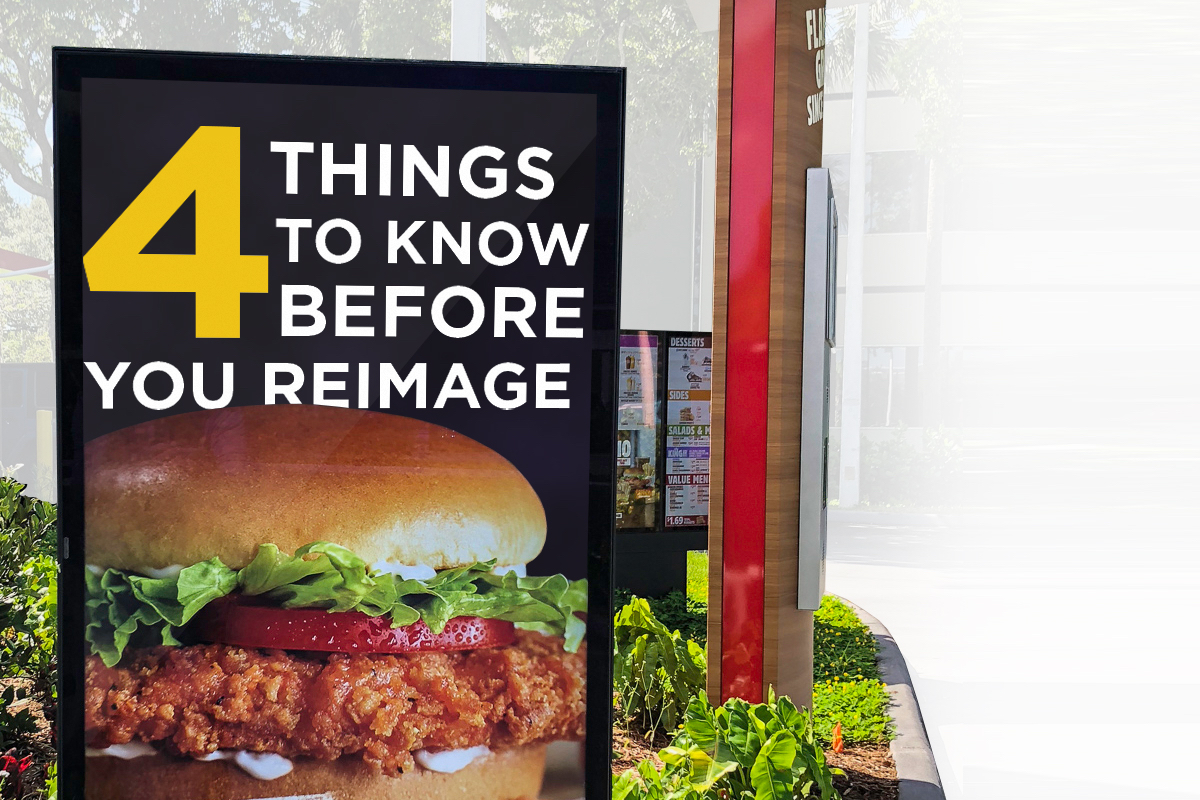Sponsored by LSI Industries.
In the competitive quick-service world, the modern restaurant is equipped with sleek menuboards and bright LED lighting to create an inviting environment patrons can connect with. Reimaging programs are no longer reserved for the top quick-service brands, but are fast becoming the standard. Effective campaigns include updating or installing new signage, graphic displays, LED lighting, kiosks, and architectural elements.
Reimaging is a daunting task, especially when implementation must take place across a national footprint, but it is also an investment in the long-term success of a brand.
Before launching a reimage, here is what restaurant leaders should keep in mind.
1. Make a Detailed Plan
A reimage program starts with a vision of a successful outcome, which should then be fine-tuned and developed into mock-ups, 3-D renderings, and even architectural fly-throughs of the proposed remodel. This will help brand leaders visualize the finished product and help catch inefficiencies prior to implementation.
The planning process is also a pivotal time to educate management teams at the local level about why a reimage is happening and what it will entail.
“This could be a campaign across 10 stores or 10,000 stores—the process really isn’t that different,” says Robin Hood, executive vice president at LSI Industries. “It begins at the executive level, and then moves through to the management team. The whole team should understand the objectives of the investment and be able to verbalize it to customers.”
2. Track Progress
Due to the scale of a refresh, Hood recommends creating a timeline and closely monitoring the progress and results.
“With a multitude of overlapping activities happening during implementation, often with the commencement of one dependent on the completion of another, it’s pivotal to stay on track,” Hood says. “It’s important then to track progress and deliver updates to ensure a consistent and desired outcome at every location. This practice will also reveal any budget variances.”
3. Not Just Aesthetics
A common misunderstanding is that reimaging is focused solely on appearances. Brands can pump money into decor, but that doesn’t guarantee success.
“It is a business venture, not a beauty contest,” Hood says. “That means the image and redesign are done with the core intention of creating a customer environment and experience that inspires a continuing connection with the brand, and leads to increased revenue.”
4. Team Up With Experts
Few quick-service brands are equipped to execute a reimage without external assistance. Partnering with a company like LSI can help quick-service brands save money in the long run.
“A reimage campaign involves a million little things,” Hood says. “It’s having the experience to know what 90 percent of those things are and the ability to react to the other 10 percent in a time-efficient manner that satisfies everyone.”
Finding a strong partner can be the key to solving all of the challenges a reimage presents.
“We are not a sign company, nor an ad agency,” Hood says. “We have a specialty role that involves understanding design intent as well as the needs of the brand’s customer, taking that and putting the lessons we’ve learned across 40-plus-years into the work being done today. We offer turnkey services, from product development, to manufacturing, implementation, and project management, and are your link from concept to completion.”
For more information on how to complete a reimaging campaign, visit the LSI Website.
By Charlie Pogacar













